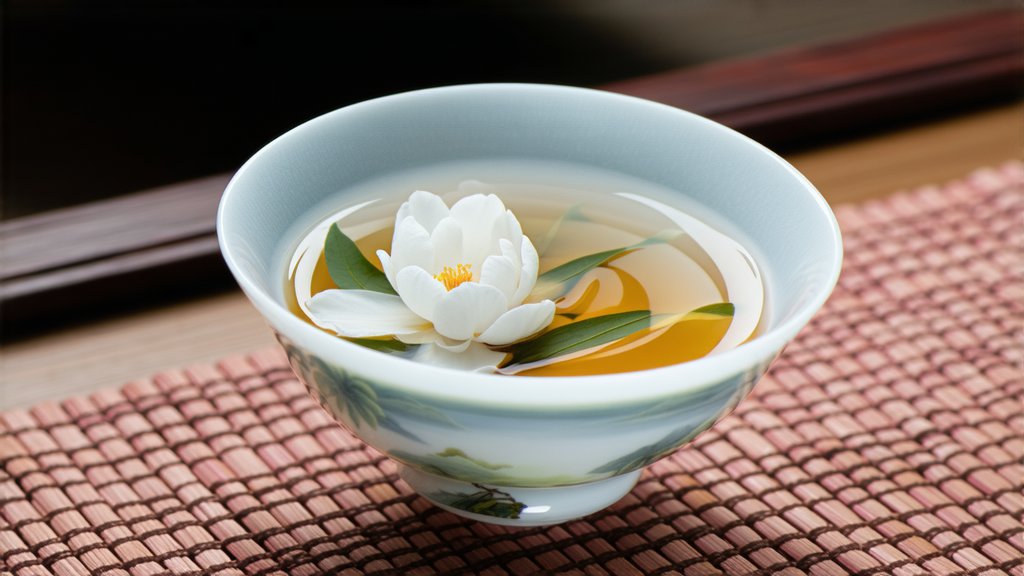
Nestled within the lush landscapes of Fujian Province, China, lies a treasure that has been cherished for centuries—White Peony Tea, also known as Bai Mudan. This exquisite variety of white tea not only embodies the essence of Chinese tea culture but also stands as a testament to the meticulous craftsmanship that defines this ancient tradition. As an expert in the realm of tea, I am delighted to embark on a journey through the history, varieties, production process, and the art of appreciating White Peony Tea, inviting international readers to partake in this sensory adventure.
A Glimpse into History
The origins of White Peony Tea can be traced back to the Tang Dynasty (618-907 AD), though it was during the early Qing Dynasty (1644-1912) that its cultivation and production reached prominence. Legend has it that Bai Mudan was discovered by chance when a tea farmer named Wei Qingyuan observed how his tea plants sprouted naturally after being covered by snow. Intrigued by this phenomenon, he harvested the buds and processed them into tea, thus creating what we now know as White Peony. Its name, Bai Mudan, translates to "White Peony," symbolizing purity and elegance, traits that are mirrored in both its appearance and flavor profile.
Varieties and Classification
White Peony Tea falls under the broader category of white teas, which are minimally processed to retain their natural properties and delicate flavors. Unlike green or black teas, which undergo extensive oxidation, white teas are simply withered and dried, preserving their light color and subtle taste. Within the realm of white teas, Bai Mudan is distinguished by its use of one bud and two leaves, giving it a more complex flavor profile compared to other white tea varieties like Silver Needle.
There are primarily two grades of White Peony Tea: Superior and First Grade. Superior Bai Mudan features longer, more slender leaves with a silvery down covering, indicative of higher quality and a more refined taste. First Grade, while still of excellent quality, may have slightly shorter leaves and less silver hair, resulting in a milder flavor.
The Art of Production
The production of White Peony Tea is a labor-intensive process that requires precision and care at every step. It begins in late spring when the tender buds and leaves are handpicked, usually between March and April. The timing is crucial; picking too early or too late can significantly impact the tea's flavor and aroma.
Once harvested, the leaves undergo a natural withering process, where they are spread out thinly in bamboo mats under the sun or in well-ventilated rooms. This step allows the leaves to lose moisture slowly, enhancing their sweetness and reducing bitterness. After withering, the leaves are gently rolled to encourage further drying and to shape the final product.
Next comes the baking stage, where the withered leaves are lightly roasted to remove any remaining moisture and to fix the tea's flavor. This is done carefully to avoid burning the delicate leaves. Finally, the tea is sieved to remove any impurities, ensuring a clean, pure end product.
Appreciating White Peony Tea: A Sensory Experience
To truly appreciate White Peony Tea, one must engage all senses in a traditional tea ceremony. Begin by selecting a clear glass teapot or a Gaiwan (a Yixing clay pot), allowing you to observe the graceful unfurling of the leaves as they steep. Use water heated to around 80-85°C (175-185°F), as boiling water can scald the delicate leaves and extract bitterness.
Steep the tea for approximately 3-5 minutes, adjusting based on personal preference for strength. As the leaves dance in the hot water, their aroma fills the air—a fragrant blend of floral notes reminiscent of peonies, jasmine, and honey. The first infusion reveals a pale golden liquor, hinting at the tea's purity and subtlety.
Taste the tea slowly, savoring its gentle sweetness intertwined with a whisper of fruitiness and a lingering floral finish. Each sip should be accompanied by a deep breath in to fully capture the tea's aromatic bouquet. As you progress through multiple infusions, Bai Mudan rewards you with evolving flavors, each revealing new dimensions of its character.
In conclusion, White Peony Tea is not merely a beverage; it is an invitation to explore the depths of Chinese tea culture. From its storied past to its intricate production methods and the meditative act of its consumption, Bai Mudan offers a gateway into understanding the philosophy behind tea—harmony, balance, and the celebration of nature's simplest gifts. For those seeking a moment of tranquility amidst the chaos of modern life, a cup of White Peony Tea serves as a gentle reminder to pause, breathe, and savor the present moment.